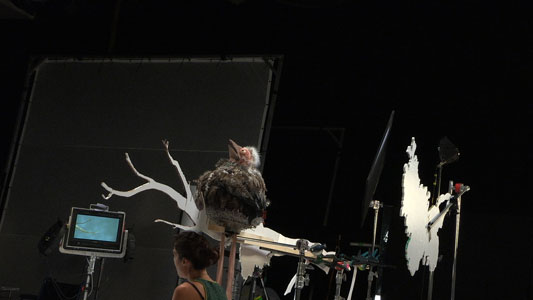ARTEXT : La Biennale di Venezia
54 Esposizione Internazionale d'Arte
Arsenale, Artiglierie
RESISTANCE
Ali Kazma
In his video series entitled Resistance, Ali Kazma explores the interventions and strategies that both release the body from its own restrictions and restrict it in order to control it. As an extensive survey on the contemporary discourses, techniques and management tactics developed for the human body, Resistance is an attempt to unravel the interventions imposed and practised on the body today. The series promises to expand over time in order to venture further into the infinite scope of knowledge that counts the body as its source both as a real and restricted image, and as a field of infinite possibilities. It also provides important clues regarding the direction Kazma's artistic production is likely to evolve in.
In Obstructions, another series he began to produce in 2005, Ali Kazma has carried out research into the tense equilibrium between order and chaos, life and death. In these works, he observed the human effort to hold together a world that inclines towards disintegration and destruction; the diversity of physical production developed to achieve this unity; and what such production might mean within the context of human nature.
In a similar manner that Obstructions emerged from Today, Resistance is now evolving out of the Obstructions series to explore the ways in which the body is shaped today through scientific, cultural and social tools, and how as a performance site it is repeatedly reproduced. In other words, Resistance conveys the productive activity of the body as a creative force directly onto the body itself: the producer and the produced, the shaper and the shaped are united here in the materiality of the body.
During the almost one-year long filming process of Resistance, Ali Kazma visited various sites to record the processes that both construct and control the body. He explored the struggle to break the social, cultural, physical and genetic codes of the human body in order to render it perfect, as well as the processes during which the body becomes, or is transformed into a conveyor of new symbols and meanings.
Brought together under the title Resistance, these videos complement each other within the composition of a single installation and explore the construction of the material body in three different layers. If we were to imagine the body as a disposable shell, but at the same time it is the physical enactment and guarantor of the self, Ali Kazma's camera not only looks at this resistant shell and the interventions applied to it, but also descends into what lies beneath this surface, into the fabric that holds the body together yet also causes it to dissolve, in other words, into the field of flesh as the ultimate material state of the body. A third layer then emerges as the institutional/spatial shells that surround and shape the body, discipline it, constantly inspect it and subject it to control and surveillance.
In Resistance, Ali Kazma explores the interventions on the body not only through the subjects before his camera, but also through the spaces that stage its reconstruction. He seeks the counterpart of the metaphor that, since Ancient Greece, has spatialised the body as a coffin, cage or prison of the mind and the spirit in architecture and spatial organisation. Although he almost never shows the body itself in these works, his camera targets the sites that recall the control, discipline and restriction of the body.
Instead of adopting a reductionist approach that challenges the mystery of the body and tries to understand it almost as an anatomical object, Resistance attempts to read the complex meanings and enigma produced by the body as a physical and conceptual space from within a broad network of relations. In this multi-channel video installation premiered at the Venice Biennale, Ali Kazma researches the networks that shape the body within social, cultural and scientific layers. The relationship between being a body and having a body; and the tension that emerges within the infinite possibilities and borders of the body as a field of information, control and performance are explored under a range of diverse definitions and perceptions such as material body, social body, body under surveillance, disciplined body, body at work, and the sexual body.
Ali Kazma filmed this comprehensive project in various parts of the world, in different settings and with different subjects: a film set in Paris, a prison in Sakarya, a school and a hospital operating room in Istanbul, a cryonics institution in the US, a university in Berlin where robot production and experimental research is carried out, a medical research laboratory in Lausanne, a tattoo studio in London, and a theatre hall in New York where rehearsals of Hamlet were held, just to name a few.
In an interview he gave during the production process of Resistance, Kazma stated that he is interested in how human beings transform their surroundings as they produce and how in return they are transformed by the world, and what he actually explores in his works is this specific, reciprocal interaction. Resistance series (as in Obstructions) carries out research into production processes developed by humans in order to shape the world, yet this time it places the human body, itself shaped by and within these processes, at its centre. Presented for the first time at the 55th Venice Biennale as a multi-channel installation with a spatial organisation that surrounds the viewer, Resistance adds yet another body to the interaction that Ali Kazma has formed with the world.
Curatori - Emre Baykal
Artisti : Ali Kazma
Web site: http://pavilionofturkey.iksv.org/ |

